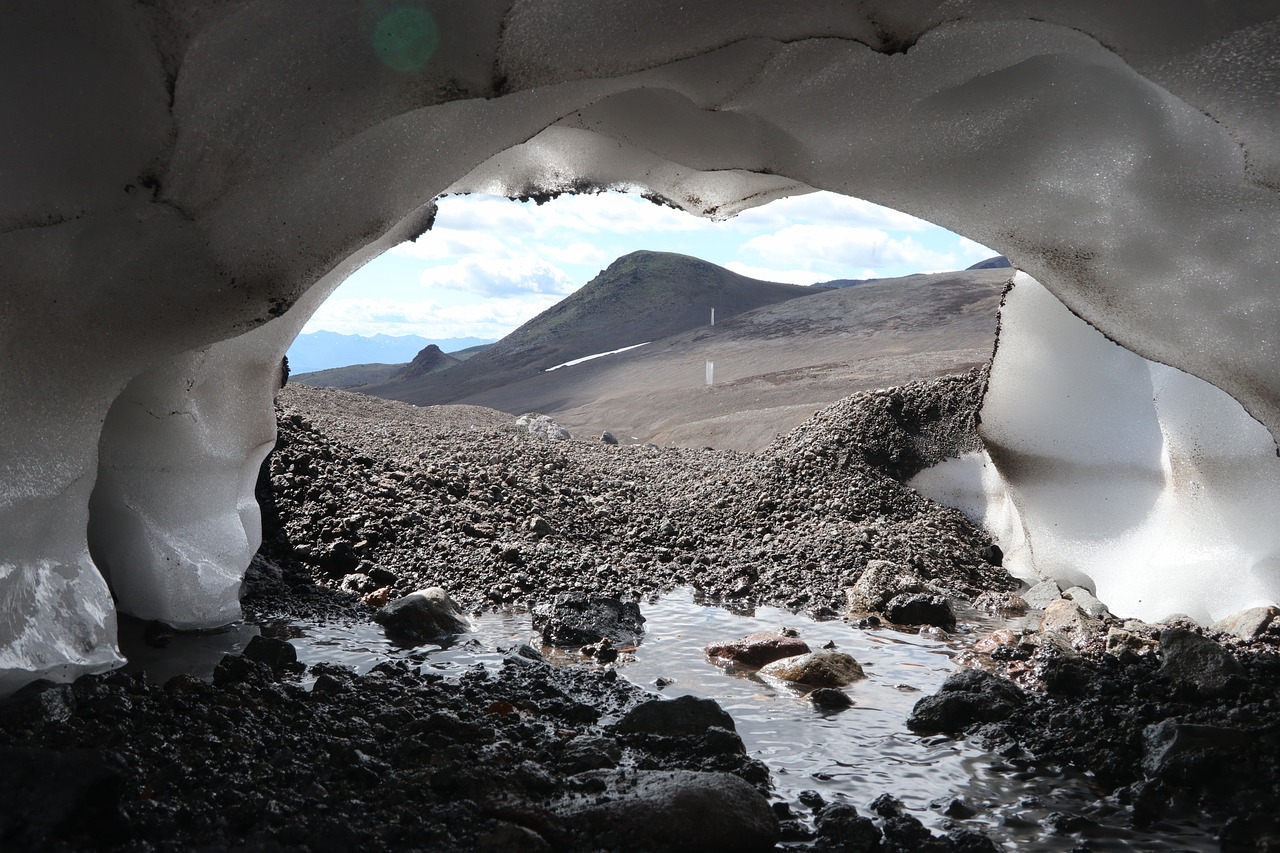Winter brings with it a unique set of challenges and opportunities for outdoor enthusiasts. While some people might hibernate indoors during the cold months, others embrace the winter wonderland by engaging in activities like skiing, snowboarding, and snowshoeing. For those who crave adventure and want to test their survival skills, building snow shelters like snow caves and quinzhees can be an exciting and potentially life-saving endeavor.
Snow shelters are ingenious structures that provide protection from the harsh winter elements and can be crucial in emergency situations. They are not only practical but also offer a sense of accomplishment and connection to nature that few other experiences can match. In this comprehensive guide, I will explore the art of building snow shelters, focusing on snow caves and quinzhees, two of the most reliable and effective options for staying warm and safe in the snow-covered wilderness.
The Importance of Snow Shelters
Before delving into the specifics of building snow caves and quinzhees, it’s essential to understand why these shelters are so vital in cold, snowy environments. Winter conditions can be unforgiving, with extreme cold, strong winds, and limited visibility. Whether you’re a winter adventurer or find yourself unexpectedly stranded in the snow, a well-constructed snow shelter can be a lifesaver.
- Protection from Cold: The primary purpose of a snow shelter is to keep you warm. Snow is an excellent insulator, and when compacted properly, it can trap heat effectively, creating a cozy environment even when the temperature outside is frigid.
- Wind Barrier: Snow shelters act as windbreaks, preventing the biting cold winds from reaching your body. This added protection is crucial for maintaining body temperature in extreme conditions.
- Visibility and Camouflage: Snow caves and quinzhees are typically constructed to blend in with the surrounding landscape. This camouflage can be a lifesaver when you want to remain hidden from potential threats or lost in a whiteout.
- Emergency Shelter: In case you get caught in a snowstorm, become injured, or simply need a place to rest, having the skills to build a snow shelter can mean the difference between life and death.
- Sense of Accomplishment: Building a snow shelter is an adventure in itself. The satisfaction of creating a functional structure from natural materials is a rewarding experience that connects you to the environment and enhances your outdoor skills.
Now that we’ve established why snow shelters are essential, let’s explore the two most common types: snow caves and quinzhees.
Snow Caves: Nature’s Cozy Hideaways
Snow caves, also known as snow tunnels or snow burrows, are naturally occurring or human-made hollows within snowdrifts. These structures have been used by indigenous peoples and survival experts for centuries. When properly constructed, snow caves can provide excellent protection against the cold and wind.
Finding the Right Location
- Choose a Snowdrift: The first step in building a snow cave is to find a suitable location. Look for a large, stable snowdrift. These can often be found on the leeward side of hills, cliffs, or boulders where snow accumulates due to wind.
- Assess the Snow: Before digging in, assess the quality of the snow. The ideal snow for cave-building is moderately packed and not too fluffy. Wet, heavy snow can be challenging to work with, while extremely dry snow may not provide enough insulation.
Building a Snow Cave
- Tools and Gear: To build a snow cave, you’ll need some basic tools and gear, including a snow shovel, a snow saw, and clothing appropriate for cold and wet conditions. Make sure you have a headlamp or flashlight with extra batteries for illumination inside the cave.
- Digging In: Start by digging a trench into the snowdrift, ideally about 2 to 3 feet deep and the length of your body. This trench will serve as the entrance to your snow cave.
- Creating the Cave: From the trench, dig upward and into the snowdrift to create a tunnel. The tunnel should slope gently upward to prevent cold air from settling inside the cave. The height of the tunnel should allow you to crawl comfortably. As you dig, place the excavated snow outside the entrance to avoid obstructing the cave’s interior.
- Widening the Cave: Once the tunnel reaches a suitable depth, begin widening the cave’s interior by digging out the snow on both sides. The walls should be about 6-8 inches thick to provide adequate insulation.
- Ventilation Hole: Near the top of the cave, create a small ventilation hole to allow fresh air to enter and carbon dioxide to escape. This hole should be carefully placed to prevent snow from falling inside.
- Smooth the Interior: Use your hands or a flat tool to smooth the interior walls and ceiling of the cave. This helps to reduce condensation and create a more comfortable living space.
- Test for Stability: Before spending the night in your snow cave, test its stability by tapping the walls and ceiling with your hand or a tool. If you notice any cracking or shifting, consider reinforcing the structure or finding a more suitable location.
Tips for Staying Warm in a Snow Cave
Once your snow cave is complete, there are some additional steps you can take to stay warm and comfortable inside:
- Insulating the Floor: Place insulating materials like pine branches or a sleeping pad on the floor of the cave to prevent direct contact with the cold snow.
- Use an Insulated Sleeping Bag: Invest in a high-quality, cold-rated sleeping bag to keep you warm during the night.
- Dress Appropriately: Wear dry, warm clothing and remove wet items to prevent heat loss. Layering is key to retaining body heat.
- Stay Hydrated and Nourished: Eat high-energy foods and stay hydrated to maintain your body’s internal furnace.
- Keep Active: Light exercise inside the cave can help generate body heat and keep you warm.
Remember that building a snow cave requires practice, and it’s best to try it out in a controlled environment before relying on it in an emergency situation. Now, let’s turn our attention to another valuable snow shelter option: the quinzhee.
Quinzhees: Dome of Snow
A quinzhee, also spelled quinzee or quinze, is a dome-shaped snow shelter that is specifically constructed by piling and then hollowing out a mound of snow. Quinzhees are relatively easier to build than snow caves and can be a great choice for camping in snowy conditions.
Building a Quinzhee
- Choose a Location: Similar to snow caves, you’ll want to find a suitable location with ample snow coverage. Look for a flat area away from potential avalanche zones.
- Gather Your Tools: To build a quinzhee, you’ll need a snow shovel, a snow saw or a long knife, and clothing appropriate for cold and wet conditions.
- Creating the Snow Pile: Start by piling up a mound of snow about 7-8 feet in diameter and 4-5 feet high. Tamp down the snow as you go to compress it and remove air pockets. This is critical for the strength and stability of the quinzhee.
- Settle the Snow: Allow the snow pile to settle for at least an hour. This allows the snow crystals to bond together, making the structure more stable.
- Hollowing Out the Quinzhee: After settling, use your snow saw or knife to carefully cut an entrance into the side of the quinzhee. This entrance should be at a downward angle to prevent warm air from escaping.
- Hollow the Interior: Inside the quinzhee, hollow out the snow to create a dome-shaped cavity. The walls should be approximately 1 foot thick to provide insulation. Be cautious not to dig too aggressively, as you don’t want to compromise the structural integrity of the quinzhee.
- Create Ventilation: Similar to snow caves, it’s essential to have a ventilation hole near the top of the quinzhee to allow fresh air in and carbon dioxide out. Use a tool to create this hole carefully.
- Smooth the Interior: Just like with snow caves, use your hands or a tool to smooth the interior walls and ceiling. This helps reduce condensation and improve comfort.
Tips for Staying Warm in a Quinzhee
To stay warm inside a quinzhee, follow these tips:
- Insulate the Floor: Place insulating materials on the floor, such as pine branches or a sleeping pad, to minimize heat loss to the ground.
- Use an Insulated Sleeping Pad and Sleeping Bag: These items will help insulate you from the cold snow beneath and provide warmth throughout the night.
- Layer Clothing: Wear layers of dry, warm clothing, and remove any damp clothing to prevent heat loss.
- Stay Hydrated and Nourished: Keep your energy levels up by eating and drinking regularly. High-energy snacks and warm beverages can help.
- Ventilation Control: Adjust the ventilation hole as needed to maintain a comfortable temperature and minimize condensation.
Both snow caves and quinzhees are excellent options for winter shelter, and the choice between them depends on your skills, the conditions you find yourself in, and your preference for construction. Now, let’s discuss some additional considerations for safety and comfort when building and staying in snow shelters.
Safety Considerations
- Avalanche Risk: Always assess the avalanche risk in your chosen location before building a snow shelter. Avoid areas prone to avalanches, and be aware of the current snow conditions and weather forecasts.
- Buddy System: Whenever possible, use the buddy system when building or staying in snow shelters. Having someone with you increases safety and provides assistance in case of an emergency.
- Communication: Carry communication devices like a satellite phone or a personal locator beacon (PLB) to call for help in case of an emergency.
- Snow Depth: Ensure that the snow depth is sufficient for your chosen shelter type. Thin snow cover can make construction difficult and compromise the shelter’s insulation properties.
- Fire Safety: Never use open flames or candles inside snow shelters, as they can melt the snow and pose a fire hazard. Use battery-powered lights instead.
- Cold Injuries: Be aware of the signs of cold-related injuries, such as frostbite and hypothermia, and take preventive measures to avoid them.
- Emergency Exit: When building a snow cave or quinzhee, always create an emergency exit in case the entrance gets blocked by drifting snow or other obstacles.
Final Thoughts
Building snow shelters like snow caves and quinzhees is a valuable skill for anyone who spends time in cold, snowy environments. These shelters provide crucial protection from the elements and can be lifesaving in emergencies. Whether you’re a winter adventurer seeking a unique camping experience or a backcountry explorer looking to enhance your survival skills, mastering the art of snow shelter construction is a rewarding and practical endeavor.
Remember that building and staying in snow shelters require practice, careful planning, and a deep understanding of winter conditions. Always prioritize safety, be prepared for changing weather, and carry the necessary gear to make your winter adventures enjoyable and secure.
So, the next time you find yourself in a snow-covered wilderness, consider channeling your inner explorer and building a snow cave or quinzhee. It’s a challenging yet fulfilling endeavor that connects you with nature and provides a level of comfort and security that few experiences can match in the heart of winter’s beauty. Stay safe, stay warm, and embrace the magic of snow shelter construction.










